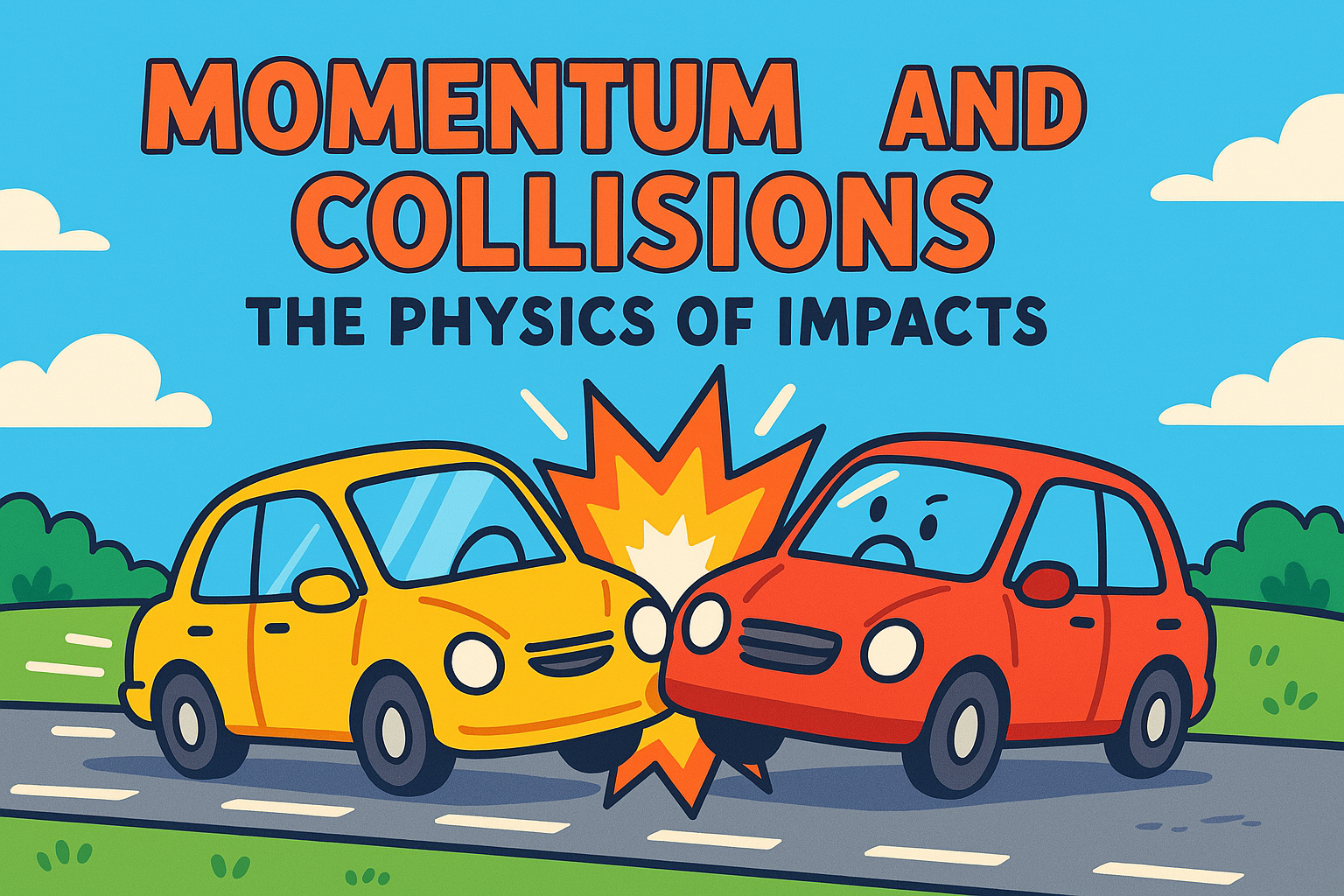Momentum and Collisions: The Physics of Impacts (Q&A)
Q & A - Momentum and Collisions: The Physics of Impacts
If your child is learning about movement, crashes, or sports in science, they may have come across the terms momentum and collisions. These ideas are part of physics, but they’re also things we experience every day — from bouncing a ball to stopping quickly on a bike.
Momentum is all about motion. It tells us how much “oomph” a moving object has, based on how fast it’s going and how heavy it is. A heavier or faster thing has more momentum. Collisions happen when things crash or bump into each other, and understanding them helps us explore car safety, contact sports, or even why airbags and bike helmets work.
This Q&A sheet has been designed for parents educating at home, with simple explanations and practical examples. You don’t need a physics degree — just a willingness to learn alongside your child. Every question is something children aged 8–16 might ask while exploring this topic. It’s perfect for supporting reading, watching science videos, or trying out real-life activities using toy cars, balls, or household objects.
All answers include helpful descriptions of trickier words (like “inertia” or “impulse”), so you can explain things clearly and confidently. You can go through the questions together as a chat, turn them into a mini quiz, or use them to start deeper discussions about how the world works. Flexibility is the goal — just like home education itself.
This topic is part of our Info Zone collection. You can read the full topic, once logged in, here: Momentum and Collisions: The Physics of Impacts
You’ll also find a full Lesson Plan and a handy Parent Q & A sheet, for this topic, ready to use..
Members Only
You need to be registered and logged in to access this Q and A sheet and all other learning resources, games and quizzes.
